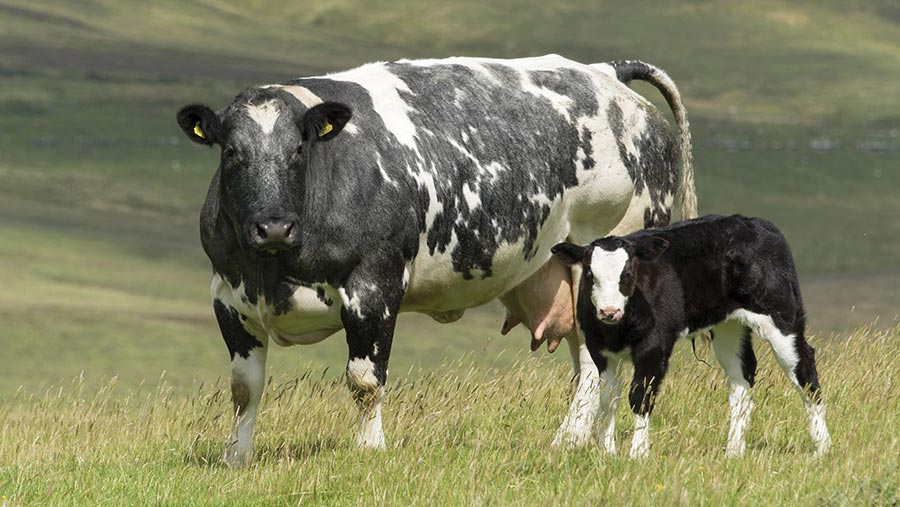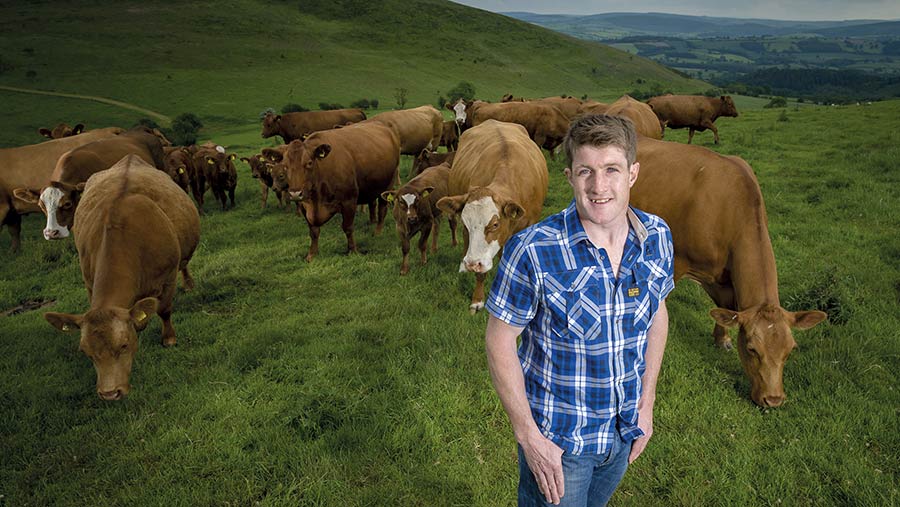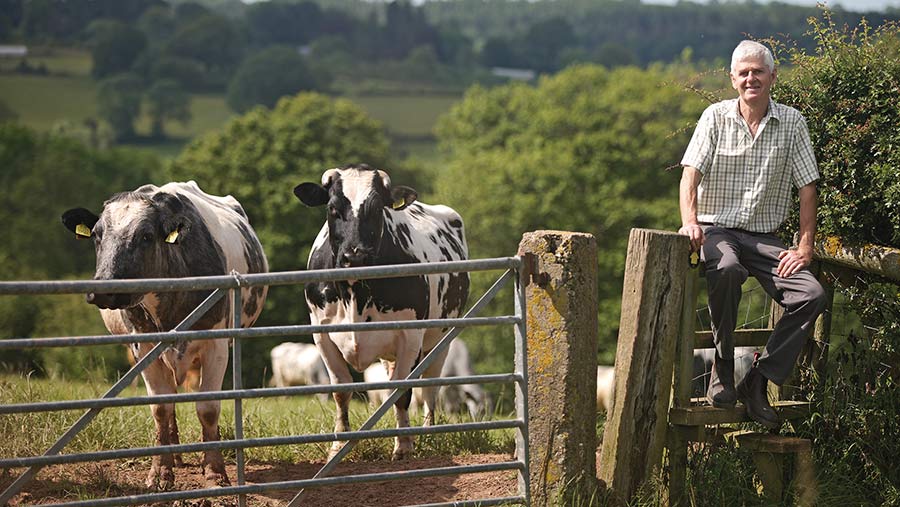Beef farmers split over ‘carbon tax’ plan for older cattle
 © Shutterstock/FLPA
© Shutterstock/FLPA Plans to impose a “carbon tax” on farmers who finish prime beef cattle later than 27 months old have split industry opinion.
The proposed £100 per head levy aims to deter producers from retaining older, slower-growing and less efficient cattle.
The idea is included in a National Beef Association (NBA) report, which says it would cut the sector’s carbon footprint and streamline production.
See also: How suckler herds can reduce carbon footprint by 40%
Some farmers support the plan, saying it would boost productivity while helping agriculture meet net-zero targets.
But other producers say it would discourage the uptake of less intensive, regenerative farming practices (see case studies, below).
NBA chief executive Neil Shand said removing older animals would free up land and feed, which could then be used to increase the national beef breeding herd.
A larger, lower-cost herd, with a lower carbon footprint, would be better able to compete with beef imports, he said.
Case study: ‘Proposals are too simplistic’
Shropshire beef farmer James Evans, who produces steers and heifers at 24-28 months for ABP, farm shops and butchers, says the proposals are “too simplistic”.

© Jim Varney
Mr Evans runs 400 Stabiliser cows in the village of Linley. Raised organically, cattle are outside all year on a diet of forage alone.
Many customers want older animals at slaughter because they say it improves eating quality, he says.
While all for reducing the minimum age at slaughter for commodity beef, Mr Evans says reducing the maximum age at slaughter would be bad news for farmers like him – working hard to sequester carbon. It would discourage the uptake of regenerative farming practices, he adds.
“It’s too simplistic just to say age to slaughter is one of the biggest caveats of reducing carbon footprint of beef.
“It doesn’t take into account production methods. For every kilo of beef we produce, we sequester 18kg of carbon.”
The NBA wants a change in rules that define animals as prime cattle between 12 and 30 months – and as veal up until that age range.
Outlets for veal are limited in the UK and, in practice, farmers are holding back finished cattle until they reach prime cattle status.
Mr Shand said this was wasteful and costly in terms of greenhouse gases.
The numbers
Carbon emissions expert and NBA board member Jude Capper said a reduction in animal numbers could benefit the British beef industry.
About 160,000 animals – or 10.6% of the 1.5m prime beef cattle slaughtered each year – are between 28 and 30 months.
A further 100,000 cattle (6.6% of all prime beef) are slaughtered between 27 and 28 months.
At the opposite end of the production phase, about 25,000 beef cattle could be finished between 10 and 12 months old (see table below).
Emissions saved by shifting prime beef range to 10-27 months |
||
|
Slaughter age now |
Number of cattle slaughtered each year (t/year) |
Carbon saved |
|
29-30 |
160,000 |
55,956 |
|
28 |
90,000 |
24,852 |
|
12 |
25,000 |
6,857 |
|
Total |
287,000 |
87,665 |
|
Source: National Beef Association |
||
Dr Capper said removing these cattle would have a number of benefits.
Carbon emissions increase steadily as animals age and convert feed less efficiently, she explained.
A 10- to 11-month-old beef animal produces 4.2kg of carbon emissions a day.
This has more than doubled to 9.5kg/day by the time the animal is 31 months old.
Shifting the prime beef range to 10-27 months would see 287,000 animals marketed earlier, reducing annual carbon emissions by 87,665t.
This could allow an increase in the breeding herd – producing an extra 10,508t of prime British beef without raising the carbon output.
The NBA says the plan would generate extra revenue for beef farmers through increased sales and costs savings worth tens of millions of pounds each year.
The additional beef could substitute imports from countries in South America, which have some of the highest production emissions in the world, said Dr Capper.
Certain production systems would be excluded – for example, cull cows and herds on conservation ground or using rare breeds.
But Dr Capper said it could be applied to other herds, which could adapt to market stock earlier.
Case study: ‘Lower age range would be better’
Herefordshire beef farmer Mervyn Thomas supports a lower prime cattle age limit, arguing that selling animals less than one-year-old as veal costs him about £100 a head.

© Richard Stanton
Mr Thomas runs a suckler herd of 85 spring and autumn-calving cows in Abbey Dore.
Belgian Blue cross dairy-cross cows are mated to Blonde and Limousin sires and finished indoors after weaning, with finished progeny sold to ABP.
Better genetics, improved nutrition and management means many bulls are now ready to sell before they are 12 months old, said Mr Thomas.
But he must currently retain them until they reach their first birthday to sell them as prime cattle.
Any animals more than 400kg incur hefty penalties of 5-50p/kg.
Mr Thomas said he has already lost £1,117 on spring-born bulls that were overweight this year – and predicted six of his autumn-born bulls will also be overweight.
Extra costs for feeding and housing these animals also have to be incurred.
